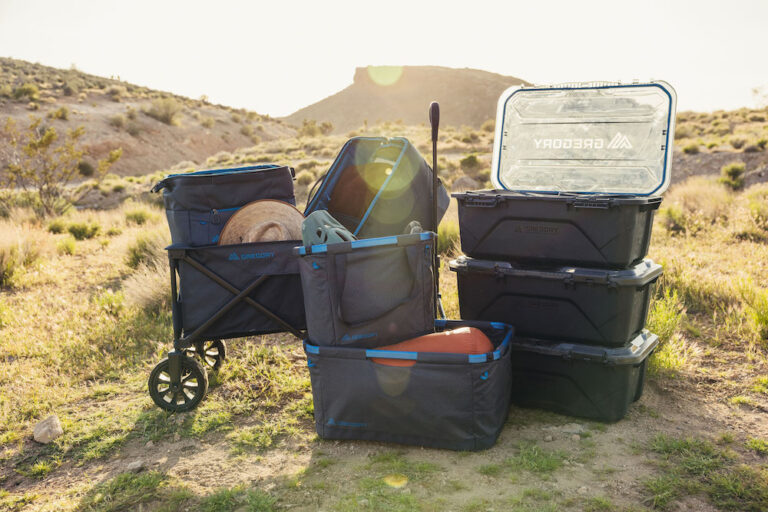By Travis Laurence Naught
Northeastern Yellowstone National Park is unbelievably wild. A dear friend of mine has taken a group of university students there for a week every summer since 2005. They watch wolves and write. Teeming herds of large mammals, expansive vistas, and the surging power of nature aid these practicing authors. Most writers don’t get a week like this—especially writers like me.
I am quadriplegic. I am an electric wheelchair user. I can’t get myself a drink, eat, or swipe away marauding insects without assistance. That represents the tip of the iceberg when it comes to helping me. Still, I maintain a unique individuality.
My parents are my caretakers. Helping me join in the Yellowstone experience was something they were more than happy to assist with. They are incredibly supportive of my independent pursuits, even when it means getting up before the sun to wander around the wild.

On the first day of our Yellowstone experience in June 2017, the early morning gray skies began to lighten as we neared the Lamar Valley. A cow moose running near the river was our first wildlife sighting of the day. She was nervous about something, but we did not see what it might be. The sun was fully up by 6 a.m. as we backed into our parking spot with a view of the hills bordering the northern edge of the valley.
Other drivers using the turnout heeded our request for extra room on our passenger side so when wolves were sighted I could exit using the wheelchair lift. My experience is that people are generally gracious when they have time to process the needs of others. Setting up viewing scopes for the students was the next order of business. Then we got down to serious scanning.
I’ve been a successful deer hunter several times over. It seems I have a knack for spotting animals from afar in their natural habitat. This trip taught me there is no way the naked eye can compete with high-powered optics at distances over 2,000 yards. Still, at our first stop I was the first to see three elk along the ridgeline. That was worth something to my ego.

We sat for an hour and a half before deciding to change locations. Students gathered the gear and we were off. It was not a failure to have to look in more than one place for these cautious canines. Being in the wilderness, begging fate to consider us lucky enough to see wolves outside of cages in a zoo, working to better our odds—it was a thrilling chase.
Our next stop was a known den site. Turf wars had been recently witnessed there. Onlookers had spied an individual from a neighboring pack sniffing around. Mob style behavior in nature. Very cool.
A very large, very brown lone animal was spied walking across the hillside half a mile from us. It appeared wallowing in its gait. I was certain it was a grizzly bear. Wolves were the prime objective, but I also wanted to see the single most powerful predator in North America. And there he was, unhurried in his girth.
Turned out to be a damned buffalo. There was some joshing at my expense. My desires had led me to into an incorrect assumption. This happens to everyone who spends time outdoors, and I consider being teased a rite of passage. My ability to take it in good spirits solidified me as part of the group.
We found wolves at our third stop. Four vehicles parked at a bathroom pullout quickly turned into 50 or 60. Extra rangers were called in to assist with parking and show folks where to look. Rick, a ranger in the park with over 20 years’ experience, turned into our private guide. He explained the history of each individual wolf we saw. He answered questions and told dry jokes for the better part of 45 minutes. Ranger Rick left quite the impression on our group that day.

I didn’t even exit the van to use the spotting scope. My friend placed it on the wheelchair lift and dialed it in so all I had to do was place my eye to the lens and enjoy. I did. For 15 minutes, sharing time with others, we watched five wolves lie down and wander around from 2,200 yards away. We were a family. They were a family. It was not life and death thrilling. It was Woody Allen drama. It was incredible for its normalcy.
Class was scheduled to meet at 3 p.m. Our breakfast had worn off and lunch was calling from the hotel. On the way, we saw a spectacular herd of American Bison. 2,000 members were spread across the valley. Each of them milled around with its own agenda, not bothered by sightseers or their history of being massacred in such collectives. None of them did anything spectacular, but the vision of this traditional Western motif was moving.
Travis Laurence Naught is an author from Cheney, Washington. He has a bachelor’s degree in psychology and went on to complete coursework in the sports psychology graduate program at Eastern Washington University. His books include “The Virgin Journals” (2012) and “Joyride” (2016).












